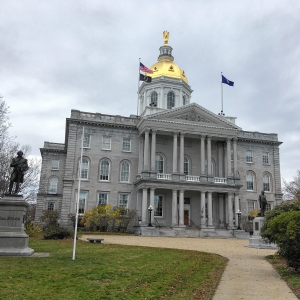Ballfield debate dominates Weare deliberative session
| Published: 02-07-2024 3:55 PM |
Weare residents were divided over the future use of 137 acres on East Road that was acquired by the town in 2013.
Two warrant articles targeting the land known as the Banks-Schmid property took up hours of debate at Saturday’s deliberative session. Selectman Salim Blume called it “the main event” of the meeting.
Both articles aimed to set aside an area to create athletic fields, but the exact location and whether the land should be used for that purpose caused division.
“There is much confusion and disagreement in town regarding the East Road property, most specifically how it was acquired and its intended long-term use,” said Thomas Clow, chairman of the Finance Committee.
Article 24 would complete the plan for an easement on the land and carve out 20 acres for a working gravel pit and an area for the athletic fields. A hay field in the front of the property would remain protected and the easement would be transferred to a land trust.
Article 26, submitted by petition, seeks to convert the hay fields at the front of the property into athletic fields. Both plans would allow the Conservation Committee to protect most of the land, but the use of the hay fields hangs in the balance.
Andrew Fulton, Chairman of the Conservation Commission, read a letter from previous property owner Raymond Banks Sr. who could not attend the session:
“(When) I sold this land at a bargain price to the town, we agreed that the fields would be protected unless it’s agricultural,” Banks wrote. “We’re not trying to deter parks and rec from putting fields in Weare, the property on East Road was not sold for this reason.”
Article continues after...
Yesterday's Most Read Articles
 Concord planning board approves new casino zoning
Concord planning board approves new casino zoning
 A May tradition, the Kiwanis Fair comes to Concord this weekend
A May tradition, the Kiwanis Fair comes to Concord this weekend
 Lawyers and lawmakers assert the Department of Education is on the verge of violating the law
Lawyers and lawmakers assert the Department of Education is on the verge of violating the law
 Concord softball’s senior class reflects on a dominant four-year run
Concord softball’s senior class reflects on a dominant four-year run
 Concord solidifies plan to respond to homelessness
Concord solidifies plan to respond to homelessness
 Cottage community rebuilds beloved dock after it was destroyed in boat crash
Cottage community rebuilds beloved dock after it was destroyed in boat crash
Some residents disagreed that the town must keep the hay fields as part of the conserved land.
“This isn’t just about, you know, putting a new soccer field in or building big, gaudy buildings. This is about building a recreational park in town for all citizens to use,” said Mike Provencher, the sponsor of Article 26. He described the use of the front fields as a “turnkey solution.”
Fulton said a November 2013 parks and recreation meeting made clear that athletic fields would be established at the site of the gravel pit, not on the farmland.
People of Weare on both sides expressed frustration that it’s been over 10 years since the acquisition of the property without any action on either the easement or the recreational use.
Parents maintained the town did not have enough sports fields for their children to use. They argued creating space where the gravel pit is located would be fiscally irresponsible because of all the work that would go into making it usable, compared to using an already open field.
Marc Payeur, a Weare lacrosse coach, said his team had to practice in the middle school parking lot last spring because of limitations of recreational space.
Citizens arguing against the Banks-Schmid property use expressed that it was necessary to preserve the rural character of Weare. They claim that the original intent was to keep the hay fields preserved and that the town should stand by its promises.
In other business, during Saturday’s eight-hour meeting, residents were presented with a $8.6 million proposed budget, and a default budget of $8.2 million.
Residents will vote on town election day, March 12.










 Hometown Hero: Hopkinton PE teacher Jordan Whitaker ran the Boston Marathon as support runner for para-athlete
Hometown Hero: Hopkinton PE teacher Jordan Whitaker ran the Boston Marathon as support runner for para-athlete New book by Mike Pride captures NH literary era
New book by Mike Pride captures NH literary era
